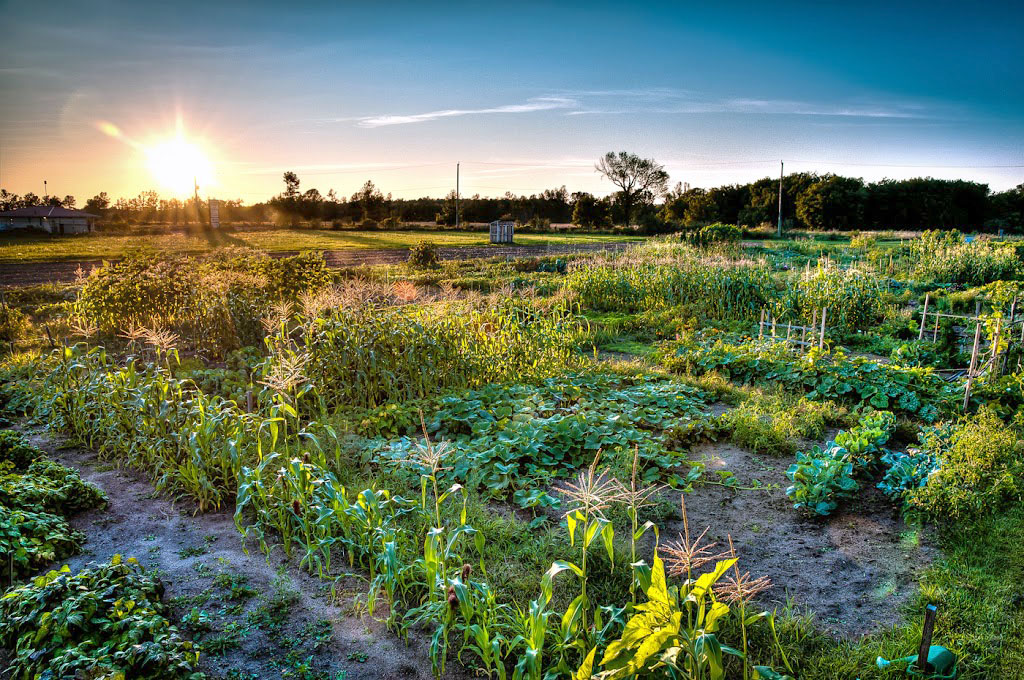Grounded in Gardening
The magical flavour of sun-warmed cherry tomatoes, picked fresh and eaten on the spot, super sweet snap peas plucked from the vine and the creamy heart of pole beans encased in a thick skin that pops when bitten into — only the food gardener truly knows these rare pleasures. There are many things to love about food gardening and access to fresh, delicious produce is chief among them. Less obvious are the secondary advantages of gardening: Productive time spent outdoors; the deep satisfaction of watching things come to life and grow under one’s care; the pleasure of knowing where one’s food came from, of increasing food security and of shrinking food miles. And, for those whose beds are in a community garden, there is the added advantage of gardening alongside neighbours and friends.
More than recreation
Though the home gardener was free to keep gardening as usual during the pandemic, those who rely on their community garden space came close to not being so lucky last year. In March 2020, when the Ontario government ordered the mandatory closure of all things non-essential to deal with the swelling numbers of COVID-19 cases, community gardens fell onto the long list of recreational spaces. Not everyone agreed with this classification. Sustain Ontario’s Community Growing Network sprang into action. An exemption was needed. Community gardens, it was argued, were much more than recreational spaces. They’re an essential food service. British Columbia, New Brunswick, Prince Edward Island and Quebec had already deemed them so. Here in Ottawa, the Board of Health was one of the first to request that the province exempt allotment and community gardens from the closures. By mid-April, community gardens were allowed to open for the 2020 growing season.
Moe Garahan, executive director of Just Food, an organization that works to build vibrant, just and sustainable food and farming systems in the Ottawa region, was thrilled with the success of the campaign.
“A huge congratulations needs to go out to all the volunteer garden co-ordinators who took on all the extra work of implementing the new regulations,” Garahan says.
“Like anywhere else, we have to be careful to maintain a two- metre distance between one another,” says Margaret Vant Erve, a co-ordinator of the Old Ottawa East Community Garden, where about 40 people garden. “Then there are hand-washing stations, gardeners are required to wear gloves at all times and all tool sharing must meet the public health guidelines.”
By now, we are all accustomed to these types of changes. However, community gardens are more than simple boxes full of soil and plants. They also double as social spaces. “People missed not having our usual season kickoff meeting and our harvest potluck,” says Heather Tait, co-ordinator of the Carlington
Community Garden. She also noted that community gardens aren’t only for the gardeners. “It’s a nice, quiet place for locals to wander through on their walks in the park and teach their kids about where their food comes from.”
Thanks to all the work done last year, the 2021 growing season is shaping up to be just as successful as that of 2020.
A key part of local food security
There are more than 7,000 members within the Ottawa area’s 96 community gardens. In the Carlington Community Garden alone, there are 52 raised beds for a total of 1,664 square feet of growing space. If we consider every community garden in the region, there are thousands of kilograms of food produced during every growing season. This leaves no doubt that community gardens contribute to local food security. What’s more, not all this food goes to the gardeners. “We have designated garden plots in which volunteers grow food that’s donated to neighbourhood food banks,” Vant Erve says. “We also contribute whatever excess comes from our own plots. I had so much kale last year that I told them to take it all.”
Get growing
Maybe you’ve fantasized about having a garden plot of your own. Maybe you’re tired of being isolated at home and are looking for some safe outdoor activity to do during the coming growing season. Maybe you’re craving community. Maybe you miss the flavour of a particular pepper variety whose seeds have been in your family for generations. Maybe this is the year you should join your local community garden. Find one near you by following this link: justfood.ca/community-gardening-network/ community-gardening-network-guide/
What if your particular corner of the capital region doesn’t have a community garden? Fret not. Just Food’s Community Garden Development Fund can help you with the initial costs as well as give you the resources you need to run a successful community garden. All the information you need is right here: justfood.ca/community-gardening-network/community-garden- development-fund/
If you’re lucky enough to have a patch for a food garden of your own, the time has never been more perfect to get started. After all, you’re home all the time, right? Just Food offers a locally adapted garden guide (available in no fewer than five languages), gardening workshops, a list of local organic seed suppliers and some pretty great ideas for transforming your front yard into an edible or pollinator garden. You’ll find all of that and more here: justfood.ca/community-gardening-network/gardening-at-home/





